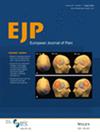Comparative Effectiveness of Exercise Modalities for Fibromyalgia: A Systematic Review and Bayesian Network Meta-Analysis
Abstract
Objective
To synthesise existing evidence assessing the impact of exercise-based therapies on pain in patients with fibromyalgia syndrome (FM), determine the efficacy of various exercise modalities, and establish the optimal exercise dosage for pain management.
Design
Systematic review and network meta-analysis.
Data Sources
MEDLINE, Embase, Web of Science, Cochrane Library, Scopus and SPORT Discus were searched from inception to July 2024.
Eligibility Criteria
Randomised controlled trials (RCTs) that included adult patients with FM compared any exercise intervention with a non-exercise control group and reported pain-related outcomes.
Results
A total of 50 RCTs involving 3761 participants were included in this meta-analysis. Aerobic + flexibility training demonstrated the most significant intervention effect compared to controls (g = −0.82, 95% credible interval [CrI]: −1.07 to −0.58; five comparisons; surface under the cumulative ranking curve [SUCRA] = 0.91), followed by water-based exercise (g = −0.72, 95% CrI: −0.92 to −0.52; 11 comparisons; SUCRA = 0.87) and Pilates (g = −0.87, 95% CrI: −1.14 to −0.59; 11 comparisons; SUCRA = 0.60). A weekly exercise volume of 875 metabolic equivalent of task (MET) minutes was required to achieve minimal clinically important difference (MCID). The overall quality of evidence ranged from low to very low.
Conclusion
Aerobic + flexibility training and water-based exercises may be effective strategies for pain management in patients with FM. However, given the substantial heterogeneity, high risk of bias, and overall low quality of evidence, these findings should be interpreted with caution. The temporary nature of these benefits underscores the importance of maintaining a consistent, professionally guided and tailored exercise regimen.
Significance Statement
While acknowledging the overall low to very low quality of the available evidence, this study suggests that combining aerobic and flexibility training or engaging in water-based exercises may be effective for pain reduction in fibromyalgia. Our analysis indicates that a weekly exercise volume of approximately 875 METs-min, potentially achieved through 2–3 sessions per week, is associated with a minimal clinically important difference. These parameters should serve as a guide for clinicians rather than a strict prescription. Crucially, exercise programmes should start at a low intensity and be progressively tailored by professionals to the patient's individual tolerance and preference, as long-term adherence is key to sustaining benefits.
Trial Registration
PROSPERO number: CRD42024585864

 求助内容:
求助内容: 应助结果提醒方式:
应助结果提醒方式:


